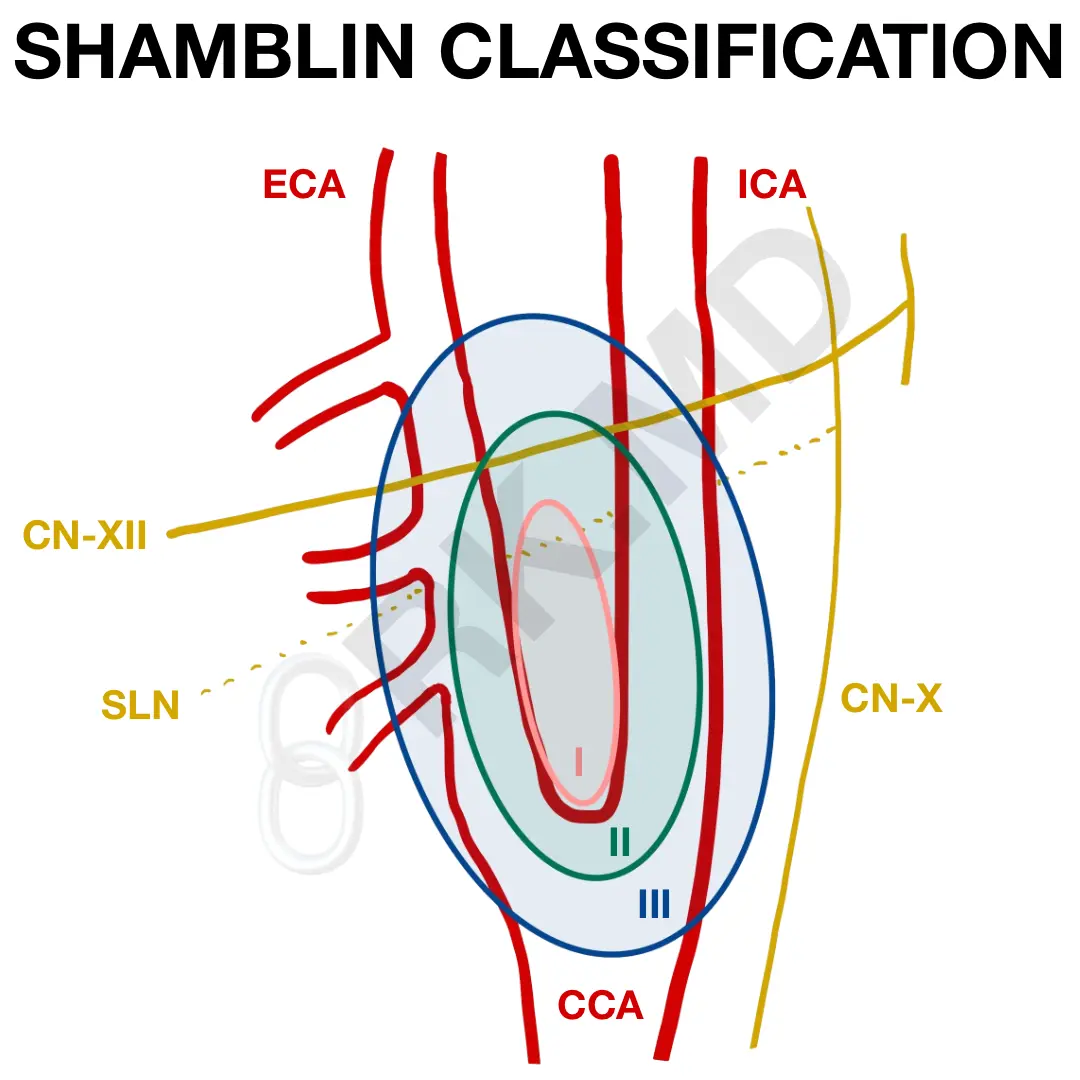Carotid body tumors are vascular tumors arising from the carotid body’s paraganglion cells at the bifurcation of the internal and external carotid arteries (ICA and ECA, respectively). The Shamblin classification is used to categorize these tumors based on their involvement with adjacent structures, namely the ICA, ECA, common carotid artery (CCA), superior laryngeal nerve (SLN), vagus nerve (CN-X), and hypoglossal nerve (CN-XII).
- Type I: pink oval, localized, easily resected tumors with minimal involvement of the ICA/ECA
- Type II: green oval, larger tumor partially adhered to the ICA/ECA which is typically resected without altering surrounding anatomy
- Type IIIa: blue oval, formerly type III, tumor encases the ICA/ECA and requires vascular reconstruction of the carotid anatomy
- Type IIIb: any tumor that invades the vessel
The Shamblin classification helps anticipate the complexity and risk associated with tumor resection, the intraoperative considerations (blood loss, intraoperative neuromonitoring, collateral damage to nerves, etc.), and whether vascular reconstruction may be needed. Unfortunately, the majority of these tumors are type II or III. Type III tumors are associated with higher morbidity and require more rigorous monitoring intra and post-operatively.






